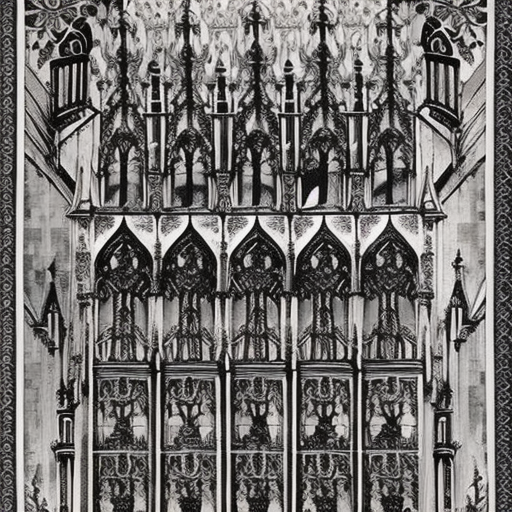Gothic Art: A Detailed Summary
Gothic art emerged in Europe during the late Middle Ages, spanning from the 12th to the 16th century. It is characterized by its distinctive architectural style, intricate sculptures, and vibrant stained glass windows. This art movement was heavily influenced by the rise of Gothic architecture and the religious fervor of the time.
Architecture
Gothic architecture is the most prominent feature of Gothic art. It is characterized by its pointed arches, ribbed vaults, and flying buttresses. These architectural elements allowed for the construction of taller and more elaborate buildings, such as cathedrals and churches. The Notre-Dame Cathedral in Paris and the Chartres Cathedral in France are prime examples of Gothic architecture. These structures were designed to inspire awe and convey a sense of the divine.
Sculpture
Sculpture played a significant role in Gothic art, particularly in the decoration of cathedrals and religious buildings. Sculptures were often placed on the facades, portals, and interior spaces of these structures. They depicted biblical scenes, saints, and other religious figures. The sculptures were highly detailed and expressive, with a focus on conveying religious narratives and emotions. The most famous example of Gothic sculpture is the “Portal of Paradise” at the Chartres Cathedral.
Stained Glass
Gothic art is renowned for its exquisite stained glass windows. These windows were not only decorative but also served as a means of conveying religious stories and teachings to the illiterate masses. The vibrant colors and intricate designs of the stained glass windows created a mystical and otherworldly atmosphere within the cathedrals. The Sainte-Chapelle in Paris is a prime example of the breathtaking beauty of Gothic stained glass.
Painting
Although sculpture and stained glass were the primary forms of artistic expression in Gothic art, painting also played a role, albeit to a lesser extent. Most surviving Gothic paintings are found in illuminated manuscripts, which were lavishly decorated religious texts. These manuscripts featured intricate illustrations and vibrant colors. The most famous example of Gothic painting is the “Très Riches Heures du Duc de Berry,” a manuscript created by the Limbourg brothers.
Themes and Symbolism
Gothic art was deeply rooted in religious themes and symbolism. The art aimed to inspire devotion and convey the teachings of the Church. Common themes included the life of Christ, the Virgin Mary, and the Last Judgment. Symbolism was also prevalent in Gothic art, with various objects and figures representing specific religious concepts. For example, the rose symbolized the Virgin Mary, while the lamb represented Christ.
Legacy
Gothic art had a lasting impact on European art and culture. Its architectural innovations influenced subsequent architectural styles, such as the Renaissance and Baroque. The emphasis on religious themes and symbolism also continued in later art movements. Gothic art laid the foundation for the development of Western art and remains an important part of art history.
In conclusion, Gothic art is a significant art movement that emerged during the late Middle Ages. It is characterized by its distinctive architecture, intricate sculptures, vibrant stained glass windows, and religious themes. Gothic art continues to captivate audiences with its grandeur and spiritual symbolism, leaving a lasting legacy in the world of art and culture.












